Several times now in my recent researches I have come across the strange phenomenon otherwise known as Dartington. On the one hand it is just a small village community in South Devon, near Totnes. On the other, it is where Roy Jenkins met his future wife Jennifer at a Fabian Summer Camp in 1940. Around about the same time, Oliver Postgate was bitterly resenting being sent there to school. It was also the alma mater of Michael Young, who may or may not have been the inspiration behind the Open University but who chose to be Lord Young of Dartington. Considering I have never been to the place, that’s a lot of Substack material. What is more, I am still drinking from the Dartington Crystal wineglasses and tumblers I was given as a wedding present in 1986. (They certainly outlasted the marriage). So this week I have bitten the bullet and I bring you the strange and inspiring story of Dartington: or what happened when a New York millionairess chose to marry a farmer’s son from South Yorkshire.
Dorothy Payne Whitney first met Leonard in 1920 and they married in 1925, having already between them gathered several lives’ worth of experiences. Dorothy was the older of the two, born in Washington DC in 1887, when her father was serving as Secretary for the Navy in Grover Cleveland’s Cabinet - this made her for a while ‘the most famous baby in America’. William C Whitney had married into money, Flora Payne’s father having being a shareholder in Rockefeller’s Standard Oil Corporation, and once William had finished with his political career he turned to business, making even more money. William and Flora were at the very pinnacle of New York Society, part of Mrs Astor’s 400 (the people she deemed worthy to socialise with). Flora died when Dorothy was just six, her stepmother when she was eleven, her father when she was seventeen, and Dorothy became a ‘trust fund baby’, worth $8 million by the time she came into her inheritance on her twenty-first birthday - a staggering $275m in today’s values.
Dorothy was happy to enjoy her independence and her own company. She set up residences in New York and on Long Island. She travelled to Europe, and could be seen with all the smartest people skiing, yachting, at polo matches. However her father’s political interests had planted a seed, and slowly her own interest in progressive causes began to grow. She spent less time at parties, more at improving lectures, and in supporting worthy causes - the ending of City corruption, aiding immigrants, alleviating poverty. In 1911 in Geneva she married Willard Straight, a diplomat who took her to Peking. On their return to New York he joined JP Morgan on Wall Street while Dorothy nursed their three children. This is the house they had built overlooking Central Park.
They shared radical views, and it was Dorothy’s money that launched a periodical called The New Republic, still going strong today. Willard died of influenza in 1918 while serving in the army, leaving Dorothy, at the age of 31, a very wealthy widow. The Willard Straight Hall at Cornell University was built by Dorothy to honour her husband - one of the first buildings to be erected on a University campus which did not have an academic purpose: Dorothy wanted it to be a monument that enriched the student experience, and today it stands as the Cornell Students’ Union.
Leonard Elmhirst had a very different start in life. His father was the vicar of a parish on the rural outskirts of Barnsley in South Yorkshire - but also a landowner with a small agricultural estate. Leonard was the second son, born in 1893, and as was often the case with second sons, destined to follow his father into the church. He was sent away to a prep school in Derbyshire, St Anselms, where he was beaten and bullied, and then to a grand public school, Repton, where he endured even more misery, only lightened by the arrival of William Temple as headmaster, a Christian Socialist (and early promoter of the Workers’ Educational Association). These terrible experiences underlay Lionel’s later determination to establish a very different sort of boarding school.
Lionel read History at Trinity College Cambridge, and spent his holidays working for the YMCA in Cambridge and at Trinity’s mission house among the poor in Camberwell, but found himself losing his interest in the established church - could one be a christian without being a Christian, he mused. The impact of World War One, in which two of his brothers were killed, finally determined him not to enter the church. The YMCA sent him out to India, and then to Turkey, but he could not stomach the behaviour of the ‘sahib’ class, and when someone suggested that he should study agriculture more thoroughly, particularly if he was to to inherit his father’s estate outside Barnsley, he leapt at the chance. After a few months at the end of the war being drilled as a Coldstream Guard, he set off for Cornell College in New York, still one of the leading agricultural academic centres in the world.
Leonard’s time in America immediately after the War brought him two relationships, both of which were lifechanging. The first, of course, was with Dorothy. He first met her in 1920 when he called on her as a possible benefactor to the Cosmopolitan Club, where overseas students lived at Cornell. They struck up a warm friendship, and Leonard, or Jerry as Dorothy always called him, got his funds - but it took him five years to convince her that he had fallen in love with her and wanted to marry her. She turned him down at least three times, citing her wealth, her three children, her preference for living in the States and the age difference, but Leonard never gave up. For him, her money was the least interesting thing about her.
The second crucial relationship was with Rabindranath Tagore, an Indian mystic, Nobel Prize winning-poet and social reformer. In 1921 Tagore was travelling around the United States, on a fundraising mission for a school he had founded in Santiniketan, West Bengal, and he persuaded Leonard to accompany him back to India. He would spend the next three years as Tagore’s assistant at the school. Elmhirst continued to woo Dorothy by letter, and she became entranced with the vision of using her money to establish a similar school with Leonard, but somewhere in England. She had found the companion in projects and plans that she had been missing since the death of Willard - her left wing views were not making her popular in New York society. She wrote to Leonard ‘It is such satisfaction to talk to you…I needed your companionship terribly, in fact I was really starved for it. Since Willard died there has been no-one to whom I really wanted to talk, until I found you.’
In 1924 Leonard extracted a promise of marriage from her and they began to make plans for the school. They did initially consider setting it up somewhere in South Yorkshire, but the cold climate and the proximity of Leonard’s family both seemed to count against the idea. Leonard’s instruction to the estate agent at Knight, Frank apparently went something like this:
It must be beautiful, we’re starting a school. We expect to make farming pay, it must have a reasonably productive soil and climate, as much variety as possible, woods, forests, orchards etc and if you can give me all those, then historical association thrown in. In Devon, Dorset or Somerset.
The agent, not short of landowning families in financial difficulty, came up with a list of forty-eight properties: Leonard bought himself a driving licence, a driving lesson and a Talbot car, and set off house-hunting with his sister for company. It didn’t take him long to decide that Dartington was the place - he wrote to Dorothy ‘a veritable fairyland…I wanted to kneel and worship the beauty of it all.’
Dorothy and Leonard were married at her estate on Long Island in 1925 and moved to Dartington the very next month. The place was a wreck, long fallen into disrepair, and they acquired the entire estate for £30,000 (£2.3m in today’s money), but would spend much more rebuilding it and making it fit to live in for the twentieth century. It needed its own electricity generator, roads around the estate needed repairing, plumbing and drainage all needed work - Leonard even set up its own fire brigade. Three of Leonard’s brothers moved down from Barnsley to help, one to run the poultry farm, one to act as estate manager, and one to look after the legals. The local community were instantly suspicious - Americans with money were not very popular in rural England in the aftermath of the war, having, as it was felt, suffered minimal casualties compared to the devastating losses visible on every parish memorial. The Elmhirsts did not endear themselves to the local gentry either, by paying proper wages to their staff and by banning foxhunting over their land.
Most mysterious of all was what the Elmhirsts planned to do with this new-fangled, co-educational boarding school. According to Michael Young, who wrote a history of the couple and their endeavours, published in 1982:
Rumours of what was going on spread all over England and at different times various different authorities, including the police, were asked to make enquiries about it…the whole thing was utterly new and mysterious.
Young claims that there was even an under-cover policeman enrolled for a six-month course in the gardens department - but no amount of looking under flowerpots turned up anything illegal.
By the end of 1925, two documents had been issued - a School Prospectus, and ‘An Outline of an Educational Experiment’. Dartington would be different from any other boarding school operating in England at the time - no corporal punishment, no prefects, no uniforms, no Officers’ Training Cadet force, no segregation of the sexes, no compulsory games or religious instruction, no classics, no competition, and no jingoism. The school would be child-centred - children could choose what they wanted to do, when they wanted to do it. The curriculum would flow from the children’s own interests, they would learn by doing., adults would be friends and the whole institution would be a ‘self-governing commonwealth’ with meetings attended by all equally to agree any rules. The departments were all designed to impart extremely practical skills: such as gardening, farming, forestry, building and accounting. Bernard Leach, from his base at St Ives in Cornwall, was persuaded to set up a pottery kiln.
This prospectus would not appeal to everyone, in fact to many outside observers it seemed to be a recipe for disaster, or worse. But Leonard and Dorothy were far more respectable and conventional than their critics assumed. As Michael Young wrote:
Dorothy did not wear a dirndl skirt nor Leonard a beard. In their own lifestyle they were the very opposite of Bohemians; they were not sun-lovers, naturists, vegetarians or youth hostellers. They ate white bread. They were never seen naked in public. All the same, they were to be magnet for the devotees of naked bodies and cabbage juice.
Early visitors included George Bernard Shaw and TE Lawrence. Bertrand Russell, Aldous Huxley, Victor Gollancz and Raymond Postgate sent their children. Sigmund Freud’s grandsons Lucian and Clement are among the better known alumni, also the children’s novelist Eva Ibbotson. In September 1929 there were 25 pupils, by 1932 124 including the newly-launched day nursery, and in 1938 131 boarders and 63 day pupils - which made it a viable institution. Yet for many years it was mostly associated in the public mind with the mixing of the sexes - adolescent boys and girls sharing sleeping accommodation, and bathing naked in the stream. The first professional Director of Education, Bill Curry, said later that in fact ‘there were very few pregnancies’. Michael Young, a pupil from 1929, said Curry was fortunate that there were so few, ‘It was not for want of trying.’
In 1932 the Elmhirsts passed their property into the Dartington Hall Trust, which continues to this day. Over the years, the Trust, pursuing the couple’s project of building a self-sufficient rural community, hosted a cider press, a sawmill, a furniture factory, a tweed weaving shed, two theatres, three restaurants and a busy adult education centre. Dartington Glass was established in north Devon, at Torrington, in the 1970s, and is still going strong. Each of the businesses in theory was supposed to be independent of Dorothy’s chequebook after ten years - they didn’t all make it. Sadly the school itself was closed in 1987 after a sex scandal involving the headmaster and his wife. Dorothy’s passion, the Dartington College of Arts, was merged into Falmouth University in 2010.
Dorothy died in 1968 aged 81, Leonard six years later at the age of 80. Neither of them ever accepted any titles from the British Government, although Leonard received several honorary degrees. This piece simply does not have space to explain all the other many projects this worthy and imaginative pair accomplished. There are so many legacies to thank the Elmhirsts for, including the first London production of RC Sherriff’s Journey’s End, and the sponsorship of PEP, the Policy and Economic Planning think tank that Michael Young would run after the War. Dorothy’s money may also have been behind Young’s other major project, The Consumers’ Association and Which! Magazine, as it was a cause she had been interested in back in the 1920s in America.
Leonard and Dorothy were not surprised that some of the projects they founded at Dartington failed. Leonard had been taught at Cornell never to think of something as a failure, only as an experiment with a negative rather than positive outcome, and thus an interesting learning point. If they could see the ethos of most primary schools in this country today they would recognise some of the Dartington, child-centred philosophy. They would be happy that although Dartington School has closed, the estate is still as beautiful as ever, managed by the Trust they established. Dorothy wrote:
In regard to almost everything we do for Dartington we feel that we are not only doing it for ourselves nor for our generation only, but for those who will succeed us twenty, fifty, and a hundred years hence…We can’t regard ourselves as isolated and independent owners of this place. I think we are conscious every day, almost every hour, of our debt to the past…The man who conceived these two courtyards, his successors who planned the garden, and countless others who have added to the grandeur and dignity of the place - to all of them we are bound by a great tradition…We are only a link in a long chain, but I think it’s worth forging that link as well as we know how, even though money is apparently wasted in the process.
Dorothy and Leonard were not professional business people, in many ways they were idealists, and probably a lot of money was wasted. But this world would be a much sadder place if there were no idealistic philanthropists prepared to waste money on good causes. Surely we need more Dorothys and Leonards!
If you have read to the end, please press the LIKE button - or share it, or subscribe, or all three!




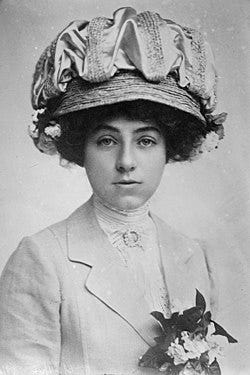
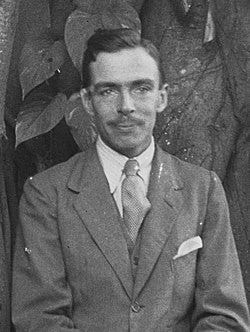

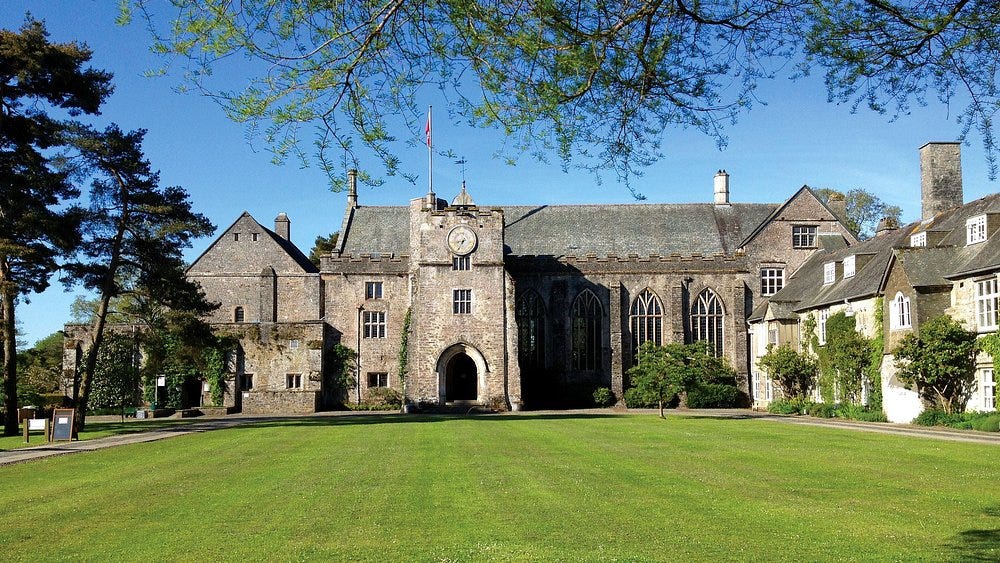
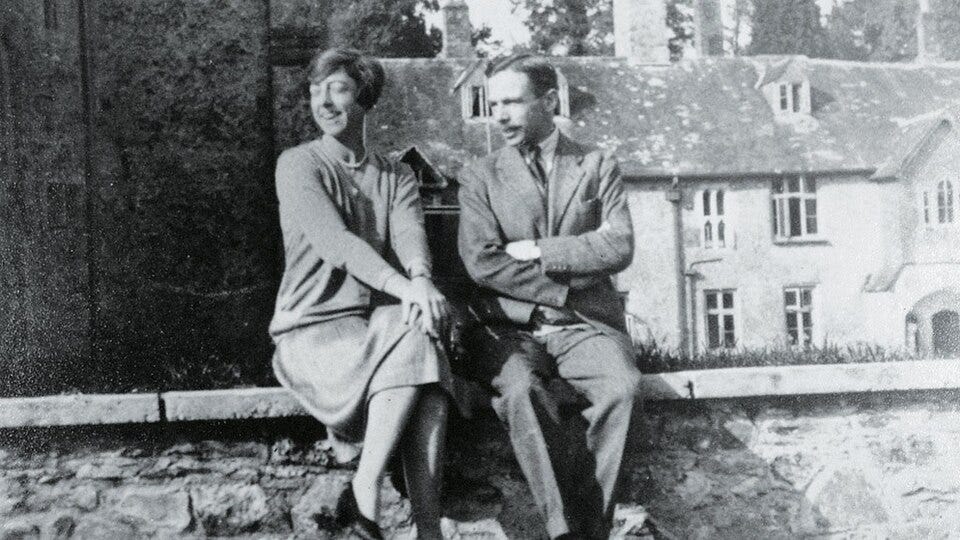

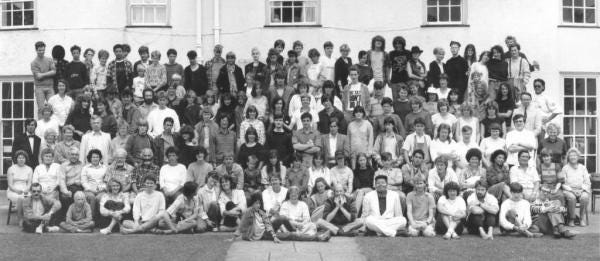

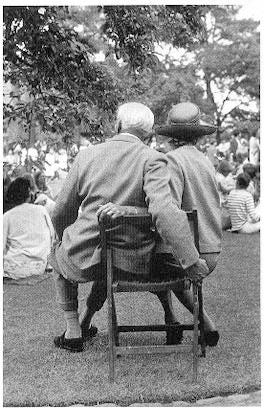
You tell the best stories, Sarah. What an inspiring couple!
Yes we need more Dorothy's & Leonards. A very interesting story beautifully told. Thank you Sarah.